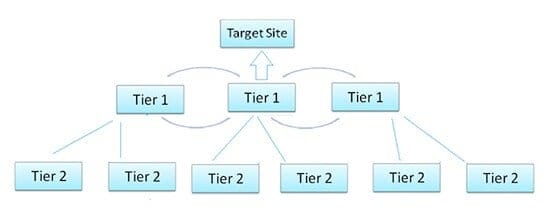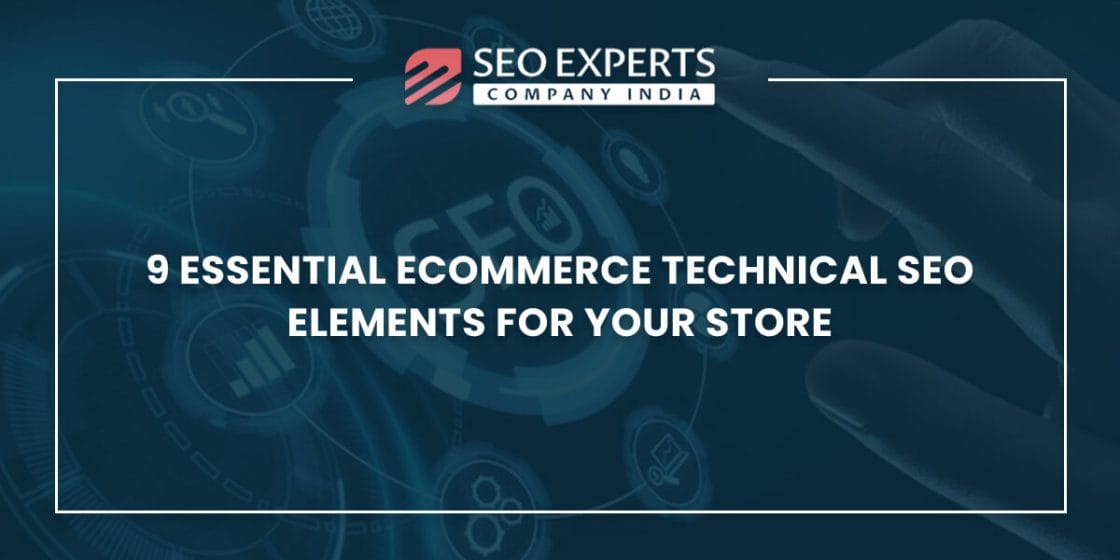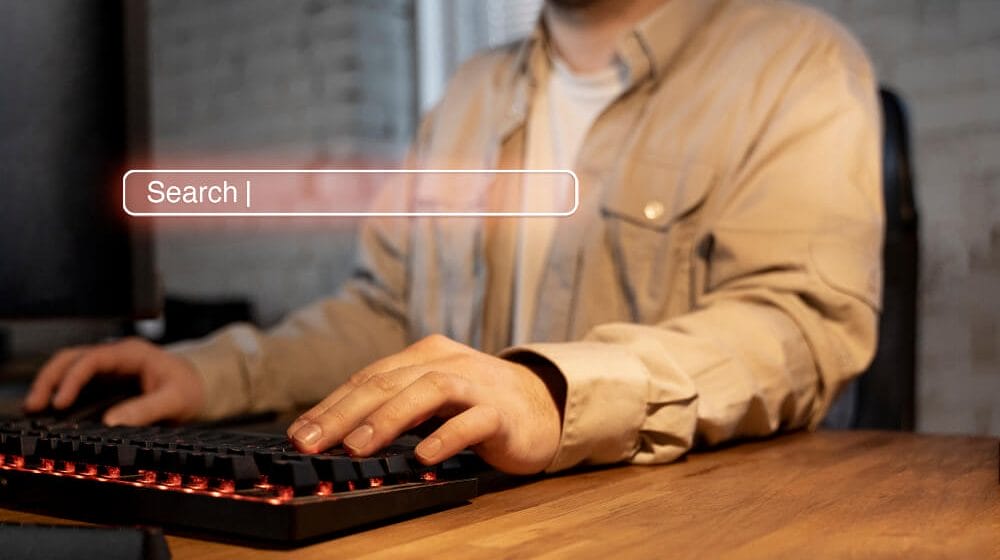While writing blogs on our website, we use plenty of technical terms that are related to the SEO world. While an SEO professional may know all these terms, lawyers are less likely to know their meaning.
In fact, many lawyers don’t understand the context of an article that talks about the benefits of law firm seo. As a result, they never understand the significance of SEO for their attorney website.
And, even if they do, it becomes difficult for them to keep up with the SEO activities being performed to optimize the website.
That’s why we have decided to write down a complete SEO glossary for lawyers. If you are a lawyer, who has no connection to SEO whatsoever, continue reading, the following blog will familiarize you with different terms that SEO professionals use.
SEO Glossary for Lawyers
Alt Text or Alt Attribute
The Alt Text is an attribute of the <img> tag, which is used to describe an image. The truth is Google can’t visually interpret an image like humans. It is only capable of reading the text.
That’s why SEO professionals write Alt Text for every image while performing image optimization. As a result, the pages are easily crawled by the search engine.
However, there is one additional benefit to writing alt text for images. In case a webs browser fails to load an image, the alt text is displayed to help the visitor understand the context of the image.
Anchor Texts
The anchor text is the clickable part of a link.
Anchor texts are a crucial part of SEO as they are one of the factors that determine backlink quality.
While building backlinks, SEOs focus on using the right anchor text to increase the relevance of the link.
As per the recommended SEO strategies, it is always recommended to use keyword-rich anchor texts.
Article Directories
These are the online directories that publish and accept legal content. They are a perfect source to get online exposure from people as well as a quality backlink at the same time.
You can publish blogs on such directories and leave a link to your website. People who’ll read your content are most likely to visit your website.
Backlinks
Backlinks are one of the major ranking signals used by Google to check the authority of a website. A backlink is basically a link that leads from one website to the other.
In SEO, acquiring quality backlinks is extremely important as they improve the domain authority (DA) and improve the search engine rankings.
Bounce Rate
Bounce Rate is a metric that is used to describe the rate at which people visit a web page and then leave. A high bounce rate means people are immediately leaving the web page.
This gives Google an indication that the page is failing to provide value to the visitors and as a result, it’s rankings are reduced by a few spots.
This is the reason why SEO professionals, such as, lawyers always focus on keeping the bounce rate as minimum as possible.
Black Hat SEO
If you have been reading about SEO for a while, you may know what black-hat SEO means. It basically includes tactics that are considered unethical by Google.
Even if they deliver results for the moment, they are likely to damage the website performance in the future. If someone is caught using these techniques, Google is most likely to penalize their website.
Blog
Blogs are one of the most effective tools to connect with your audience and rank in the top positions of Google search results at the same time. Since Google favors content more than anything, it is always a good strategy to publish informative blogs on your website.
Broken Backlinks
Broken backlinks are the links that no longer work. The linked web page is either deleted or its URL is modified by the admin.
As per the good SEO practices, it is always recommended to optimize broken backlinks using proper redirections.
Canonical URLs
If any of the web pages are accessible by multiple URLs, it is important to perform URL canonicalization so that there is one standard URL for the web page.
Google considers multiple URLs as duplicate URLs and automatically picks a standard URL. This can lead to unwanted crawling behavior.
So, SEO professionals always ensure to set one canonical/standard URL for each web page.
Content Optimization
Content Optimization is the process of optimizing the website content to make it search engine friendly.
Writing content is one thing, but it is also important to optimize it using the right techniques so that it becomes easier for the search engine to crawl and relate it with specific search queries.
Conversion
In SEO, a conversion happens when a regular visitor becomes a lead. For lawyers, a conversion usually happens when a customer fills a form, makes a call or subscribes to the newsletter.
Duplicate Content
In the world of SEO, nothing is as bad as duplicate content. Duplicate content means when the content is copied from another website.
Google strictly prohibits content duplicacy and anyone who publishes content is likely to struggle to rank in the top positions of Google search results.
Do-Follow Backlink
Do-Follow links are the backlinks that pass link juice to other web pages. By default, every backlink is do-follow. The links that are not do-follow are considered as no-follow backlinks.
Studies have shown that if you want to build a strong backlink profile, it is important to maintain a 60-40 ratio (60% do-follow & 40% no-follow backlinks).
Error Page (404)
A 404 error page is displayed when the requested page cannot be found by the web browser.
In this case, the user has either typed an incorrect URL or the page actually does not exist on the server.
Fetch as Google
Fetch as Google is Google’s tool that tells how Google crawls and views a specific web page on your website.
When you have added a new page to your website, the Fetch as Google tool can be used to check whether Google is capable of accessing the page or not.
Google Algorithms
Google has the vision to provide searchers with accurate search results for their queries. So, it uses dedicated search algorithms to filter different web pages and display the most appropriate search results.
Google also has a habit of consistently updating search algorithms. This is the reason why every SEO expert advises to stay up-to-date with the latest search algorithms.
Grey-Hat SEO
When it comes to defining grey-hat SEO, everyone has their own definition. In general, however, grey-hat SEO involves techniques that bridge the gap between black-hat and white-hat SEO.
These techniques aren’t completely unethical, but the search engine still prohibits them. However, people do use grey-hat SEO to achieve the required objectives.
Hashtags
Hashtags are a common name for anyone who uses social media websites. These are basically used to group topics that relate to one another.
In SEO hashtags are commonly used while writing promotional posts on different social media platforms. Marketers use hashtags to attract a vast group of audiences (including people who aren’t the followers).
Internal Links
Internal links are the links that go from one page of the website to the other. While writing blogs on your website, it is important to use internal linking so that a proper flow of link juice is maintained across the domain.
Inbound Marketing
Inbound marketing is a marketing technique that is used to drive targeted traffic rather than random traffic.
Inbound marketing is the go-to tool for every organization that is looking to improve conversions and overall ROI. With inbound marketing, you’ll have to develop strategies that help you attract visitors who are most likely to convert.
Keyword Research
Keyword Research is the process of finding potential and most profitable keywords (search terms) used by the searchers.
You cannot run an SEO campaign and implement SEO strategies without having a list of keywords. Every SEO professional start their SEO campaigns by conducting detailed keyword research.
Legal Directories
Legal directories are online platforms that contain listings of all the law-related websites. Directories are usually used by SEO professionals to acquire quality backlinks.
Landing Pages
In general terms, a landing page is a page on which a user lands after clicking on a link. In marketing terms, however, landing pages are usually designed with a specific intent in mind.
The main objective of designing a landing page is to compel the user to perform a certain task, be it subscribing to the email list or complete a purchase.
Lawyers Marketing
These are the dedicated marketing practices that are tailored to promote legal services across different platforms on the Internet.
Link Juice
When a web page is linked to another page, it passed a specific value. This value is known as link juice. In general, terms the link juice is basically a vote that one web page gives to the other. A quality backlink provides more value to the linked webpage and thereby increases the page authority.
Link Bait
Linkbait is a marketing technique that focuses on crafting content that attracts organic links.
Usually, bloggers write comprehensive and informative blogs to attract other people in the niche and acquire a backlink from them. As a result, the overall link profile improves.
Local SEO
Local SEO is the process of implementing techniques that optimize the website in such a way that it ranks in the top positions for a specific geographic location.
Local SEO is usually performed by small businesses that only need to target their local audience.
For instance, a restaurant. The first step of performing local SEO is to set up a Google My Business Page and Optimize it using the right information.
Long-Tail Keywords
Long-tail keywords are extremely targeted in nature, mainly due to their specific nature. These keywords usually have a very low search volume.
However, people who use them are genuine users who are most likely to convert. That’s why SEO professionals usually target long-tail keywords to drive targeted traffic to websites.
LSI Keywords
Like long-tail keywords, LSI keywords are also a crucial part of SEO. These are the text phrases that are semantically related to the target keyword. Even though many people consider LSI keywords as synonyms, that’s not true.
A word that relates to the target keyword and helps the search engine understand its context is considered as LSI keyword.
For instance, ‘fruit’ is not a synonym for Apple, but it is an LSI keyword because it tells the search engine that we are talking about Apple, the fruit, and not the tech company.
Meta Tags
Meta Tags are the HTML tags that are used to describe the content on a web page. There are different types of meta tags. However, among all, the two commonly used meta tags are meta title and meta description.
Meta Title
The title is an attribute for the meta tag. It is used to specify the title of a web page. This title appears in the Google search results and not on the actual web page.
As of standard SEO practices, while optimizing the page title, the length should be kept anywhere around 45-70 characters as it has a huge impact on the search engine rankings.
Meta Description
Like the title, the meta description is also an attribute for the meta tag. It also appears in the Google search results and not on the actual web page.
It is basically a brief description of the web page that helps understand the user and the search engine what a particular web page is all about.
Negative Keywords
Negative Keywords are generally used while running paid marketing campaigns. While running PPC ads, negative keywords are used to tell the search engine that the ad should not be displayed when a user performs a Google search using these keywords.
The main objective of using these keywords is to prevent the ad from being displayed for users who may find it irrelevant.
No-Follow Backlinks
No-follow backlinks are the links that do not pass the link juice (value) to the other web page. In order to specify a link as no-follow, it is important to use the ‘rel=nofollow’ attribute along with anchor tag (<a>).
Noindex
It is a value that is usually passed in the robots meta tag. Noindex is used to tell robots to not save the cached version of the web page in the search engine’s database. When no-index is passed, the search engine doesn’t index the web page into its database.
Off-Page SEO
Off-Page SEO involves optimization techniques that are not performed on the actual website. Off-page SEO involves everything, starting from building backlinks to promoting blogs on social media platforms.
On-Page SEO
On-Page SEO involves optimization techniques that are performed on the website that is being optimized for the search engine. In this scenario, different on-page elements of the website are optimized to make it search engine friendly.
On-Page SEO involves several techniques including page speed optimization, meta descriptions & titles, optimizing content, etc.
Organic Links
Organic links are the backlinks that happen naturally. It means that these links are not acquired by the influence of the site owner.
PageRank
PageRank is an official metric given by Google that is used to determine the authority of a web page. The PageRank is usually determined by the quality and quantity of the backlinks that link to it. In general terms, the more quality backlinks a website has, the higher would be the PageRank.
Rankings
The term ‘ranking’ is used to specify the position of a web page in Google search results among all the other web pages. Every website owner wants to attain top rankings as these are the positions that attract the majority of Internet traffic.
Reciprocal Link
Reciprocal Link is a term that is basically used to describe the link trade process. Basically when a website provides you with a link in exchange for a link then it is known as a reciprocal backlink.
Redirection
Redirections are usually done when you want to tell the search engine that the source has moved to a new URL. There are two different types of redirections, i.e., 301 & 302 redirections.
301 redirection means that the source has been moved permanently to a new URL whereas 302 redirections are done when the source is moved on a temporary basis.
Robots File
The robots file refers to a basic text file that is used to tell the robots which pages of the website should be crawled.
SEO
It is probably the most common term that we use in our blogs. SEO stands for Search Engine Optimization. It is basically a process of using different tactics to optimize a website for search engines. SEO is carried out to rank your website at the top positions of search results.
SERP
SERP stands for Search Engine Result Page. It is the page that contains search results and is displayed after a user types in a search query in Google.
SEM
SEM is the acronym for Search Engine Marketing. It includes different practices that we use to promote our brand on the search engine. SEM includes everything, starting from SEO to paid marketing.
Sitemap
A sitemap is a file that stores information about all the web pages of a particular website.
Search engines use these sitemaps to crawl your website more efficiently without missing any page.
The main purpose of the sitemap is to tell Google which information (pages, images, or videos) on the website have higher importance.
Tiered Link Building
Tiered Link Building is the process of building links in layers. In this case, links are built to a website from other online platforms on the Internet, which are then followed by a new tier of backlinks to the second website.
In this case, the link juice flows in levels and eventually reaches the main website, boosting up its domain authority.
URL
URL stands for Unified Resource Locator. It is basically the complete address for a given web page. Each web page has a unique URL and the page can only be accessed through the URL only.
White-Hat SEO
White-Hat SEO is the second face (black-hat being the first one) of SEO. It involves tactics that are completely ethical and Google does not penalize your website for using them. Even though it takes time to achieve expected results through white-hat SEO, it is still beneficial in the long run as the results are long-lasting.
Yoast SEO
Yoast SEO is one of the most powerful plugins for a website running on Wordpress. The plugin makes it much easier to handle different SEO tasks such as handling meta titles and meta descriptions, setting target keywords, setting sitemaps, etc.
Conclusion
That concludes our list of SEO glossary for lawyers. These are the most common SEO terms used by SEO Experts. We hope that this glossary will help you understand SEO-related articles more precisely in the future.












